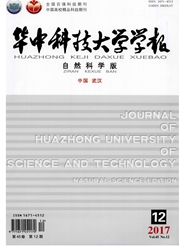

 中文摘要:
中文摘要:
将轨道结构简化为黏弹性地基上的无限长铁摩辛柯梁,在随荷载移动的动态坐标系下建立梁的垂向振动微分方程,推导特征方程的4个弯曲波动波数.利用波传播理论,将求解简谐荷载匀速移动下梁的临界速度问题转换为波数虚部的分析,避免了求解复杂的动态刚度矩阵.运用得到的解析表达式分析了梁在不同速度和激振频率下的瞬态反应.分析表明:弹性地基上的轨道结构存在临界速度,其大小和个数取决于地基的刚度和荷载激振频率;当荷载速度小于最小临界速度时,振动仅局限在移动荷载附近,且随着荷载速度的增加,结构的垂向变形增加;当荷载速度接近非零最小临界速度时,轨道结构发生强振动;当荷载速度大于最小临界速度时,振动可以沿着结构发生传播.瞬态分析结果验证了波数分析的正确性.
 英文摘要:
英文摘要:
The rail structure was simplified as an infinite Timoshenko beam on viscoelastic foundations.The differential equation governing the flexural vibration of beam was formulated in a coordinate system moving with the load.The four flexural wavenumbers were derived through the characteristic equations.Based on the theory of wave propagation,the problem of solving critical velocities of the beam under a harmonic moving load was transformed to the analysis of the imaginary parts of the wavenumbers,which avoided solving the complex dynamic stiffness matrix.The transient responses of the beam under moving load with different velocities and frequencies were investigated by the analytical solution.The results show that the number and magnitude of critical velocities depend on the stiffness of the foundations and the frequency of the moving load.When the load velocity is lower than the minimum critical velocity,the transverse response is localized near the moving load,and as the moving load velocity increases,the amplitude of the transverse deformation increases.When the load velocity is close to the non-zero minimum critical velocity,the rail will vibrate strongly.When the load velocity is higher than the minimum critical velocity,the vibration can propagate along the rail structure.The results of transient responses confirmed the validity of the analysis of wavenumbers.
 同期刊论文项目
同期刊论文项目
 同项目期刊论文
同项目期刊论文
 期刊信息
期刊信息
